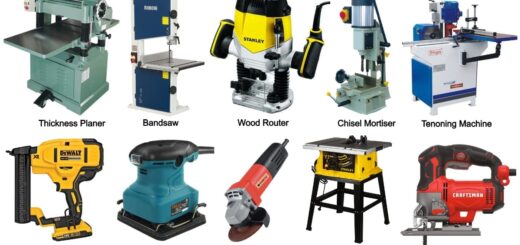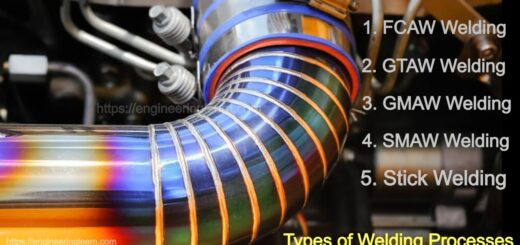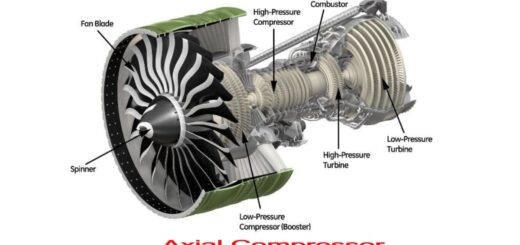16 Types of Metals and Their Uses [with Pictures]
![Types of Metals and Their Uses [with Pictures]](https://engineeringlearn.com/wp-content/uploads/2021/08/Metals-1024x539.jpg)
General Introduction of Metals?
Types of Metals and Their Uses [with Pictures] :- The significance of metals and advancement in the manufacturing processes has resulted into the much needed industrial revolution. This revolution has contributed to an escalated growth of human civilization bringing us where we are today. Today, we find numerous types of metals in our surroundings. From the nib of your pen to the big steel bridges, everything big or small is made up of metals. To our surprise there are more than eighty different types of metals found in the world today.
Definition of Metals
Metals are defined as minerals or substances that are found naturally below the surface of the earth. Most metals are found to be lustrous or shiny. Metals are inorganic substances, which imply they’re product of substances that were never known to exist. Metal is incredibly sturdy and so is employed to form several things. These are used for manufacturing vehicles, computer items. Satellites, preparation utensils, etc. Most metals are found to be exhausting however some aren’t. Sodium and potassium are those metals that may be cut by knife whereas mercury could be a liquid metal at temperature. On the other hand metals such as iron, copper, steel etc. are found in solid state.
Classification of Metals
A) Classification by Iron Content
The most prevalent method of classifying metals is by iron content they have. A metal containing iron is called ferrous metal. The iron is responsible for magnetic properties of the metal and also makes them susceptible to corrosion. Metals not containing iron content are called non-ferrous metals. These metals do not exhibit any magnetic properties. Examples aluminum, lead, brass, copper and zinc.
B) Classification by Atomic Structure
The metals can also be classified depending upon their atomic structure according to the periodic table. Going by the periodic table a metal may be categorized as alkaline, alkaline earth, or a transition metal. Metals coming in the same group behave alike when reacting with other elements. Hence these metals exhibit analogous chemical properties.
C) Classification by Magnetic and Non-Magnetic Metals
Another means to distinguish metals is studying their behaviour or interaction with magnets. Analysing their behaviours towards magnets helps to classify them as magnetic or non magnetic.
The ferromagnetic metals are strongly attracted towards magnets; the paramagnetic metals display weak interactions. Diamagnetic metals on the other hand shows loose repulsion towards magnets.
Types of Metals
Metals are found to exist into 2 main types: ferrous metals are those that contain iron and non-ferrous metals that are those that contain no iron.
A) Ferrous Metals
The word ferrous itself comes from Latin in which the word is ferrum and means an iron containing compound of metal. Metals with considerably scarce amounts of iron in their composition aren’t classed as ferrous metal. The iron in ferrous metals tends to induce some properties in them namely magnetic, of high strength and hardness. However, their characteristics will disagree greatly looking on the wide range of alloying parts of that they’re created from. Metallic element metals are liable to rust once exposed to wet conditions as they need a high carbon content.
Some common metallic element metals embody steel, forged iron and iron. These metals are prized for his or her enduringness and sturdiness. Steel – additionally called structure steel could be a staple within the industry and is employed within the tallest skyscrapers and longest bridges. Ferrous metals also are utilized in shipping containers, industrial piping, vehicles, railroad tracks, and plenty of business and domestic tools. Metallic element metals have a high carbon content that usually makes them liable to rust once exposed to wet. There are 2 exceptions to the current rule: Iron resists rust thanks to its purity and stainless-steel is protected against rust by the presence of metallic element.
Most of the metals which are ferrous in nature are hugely magnetic thus making them a very helpful material for making motors and electrical applications, etc. The utilization of ferrous metals in your icebox door permits you to pin your searching list on that with a magnet.
1. Steel: ( Types of Metals )
Steel is created by adding iron to carbon that hardens the iron. Steel becomes even more durable as different parts like metallic element and nickel are introduced. Steel is created by heating and melting ore in furnaces. The steel will be broached from the furnaces and poured into moulds to create steel bars. Steel is wide utilized in the development and producing industries.
A) Stainless Steel
Stainless steel consists of elevated chromium content. This makes it 200 times more resistant to corrosion than low carbon steel. It is used in abundance for the manufacturing of kitchen utensils, piping, surgical and dental equipment.
B) Tool Steel
Tool steel is a special variety of steel used for forging cutting and drilling tools. The most important property is their high hardness making them an ideal choice for tool making. Tool steel comprises of molybdenum, vanadium, cobalt, and tungsten as its chief materials.
2. Carbon Steel: ( Types of Metals )
Carbon steel incorporates a higher carbon content as compared to different sorts of steel eventually making it extremely hard. It’s usually utilized in the producing of machine tools, drills, blades, taps. It is capable of having a very sharp edge cutting.
A) Low Carbon Steel
The percentage of carbon is up to 0.25% in low carbon steel. The low carbon steel is also called mild steel. This steel variant is mostly used for tubing in moderate pressure applications. Reinforcing bars and in I-beams in construction are generally made up of mild steel only. Applications involving a hefty amount of steel without much forming or bending use mild steel. For example- Ship’s hull.
B) Medium Carbon Steel
The percentage of carbon is 0.25…0.6%. Medium carbon steel is used at places requiring high tensile strength and ductility. It is typically used in gearing and shafts, railway wheels and rails, steel beams in buildings and bridges, pressure vessels (Cold gases must not be stored because it cracks at low temperatures).
C) High Carbon Steel
If there is 0.6% of carbon, it is called high carbon steel. This steel is harder and more brittle of all. It is used in making chisels and cutting tools. It has ample of hardness and good resistance to material wear. Its other applications include uses in presses and for manufacturing drill bits.
3. Alloy Steel: ( Types of Metals )
Alloy steels incorporate parts like metallic element- nickel and Ti to impart bigger strength and sturdiness while not increasing weight. Stainless-steel is a very important steel created with the help of chromium. Alloy steels are utilized in construction, machine tools, and electrical elements.
4. Cast Iron: ( Types of Metals )
Cast iron is associate alloy made of iron, carbon, etc. Forged iron is brittle and exhausting and immune to wear. It’s utilized in water pipes, machine tools, automobile engines and stoves.
5. Wrought Iron: ( Types of Metals )
Wrought iron is associate alloy with very little carbon content that it can be said that it’s virtually pure iron. Throughout the method of production, some addition of slag takes place which provides iron wonderful resistance to corrosion and reaction, however, it’s low in hardness and fatigue strength. Iron is employed for fencing and railings, agricultural implements, nails, wire, chains, and numerous ornaments.
B) Non-Ferrous Metals
Non-ferrous metals don’t contain a major quantity of iron and are a lot more fascinating as they need semi conductive, non-magnetic, and low weight properties. The ever-increasing demand for non-ferrous metals means that they’re usually dearer than metallic element metals (ferrous metals). Non-ferrous metals may also be distinguished by their plasticity. This implies they will be reshaped and reused, typically while not losing their valuable properties. This makes them ideal for an in depth vary of economic industries.
Some of the most common examples of Non-ferrous metals are zinc, tin, lead and copper and even highly valuable metals like gold and silver. Their main advantage over metallic element materials is their plasticity. They even have no iron content, giving them a better resistance to rust and corrosion, and eventually making them ideal for gutters, liquid pipes, roofing and out of doors signs. Lastly, they’re non-magnetic, that is very important for several electronic and wiring applications.
1. Aluminum: ( Types of Metals )
Aluminum is light-weight, soft and low strength. Metal is well solid, forged, machined and welded. It’s not appropriate for high-temperature environments. As a result of metal is light-weight, it’s a decent alternative for carrying out the production of craft and food cans. Metal is additionally utilized in castings, pistons, railways, cars, and room utensils.
2. Copper: ( Types of Metals )
Copper is red in color, extremely ductile, malleable and has high physical characteristics for electric conductivity and thermal conductivity. Copper has its main utilization in the electrical business within the sort of wire and different conductors. It finds its use even in cartridge cases, sheet roofing, bearings and statuses. Copper is additionally accustomed to create brass, associate alloy of zinc and copper.
3. Lead: ( Types of Metals )
Lead could be a soft, heavy, malleable metal with a comparatively lower melting point and low enduringness. It will face up to corrosion from wet and plenty of acids. Lead is wide utilized in power cables, batteries, building construction and fastening.
4. Zinc: ( Types of Metals )
Zinc could be a medium to low strength metal with an awfully low melting temperature. It will be machined simply, however sometimes heating is also done to avoid cleavage of crystals. Zinc is most generally utilized in electric purposes like galvanizing, the method of applying a protecting zinc coating to iron or steel to forestall rust.
5. Tin: ( Types of Metals )
Tin is incredibly soft and malleable, ductile with low enduringness. It’s typically accustomed to coat steel to forestall corrosion. Tinplate steel is employed to form tin cans to carry food. Within the late nineteenth century, tin foil was usually accustomed wrap food merchandise, however has since mostly been replaced by aluminum foil. Tin may also be alloyed with copper to provide tin brass and bronze.
6. Brass: ( Types of Metals )
Brass is basically an alloy made of copper and zinc. The amount of each of the metals may differ based upon the electrical and mechanical attributes sought of the metal. Brass also comprises of slight amounts of other metallic elements such as aluminum, lead, and manganese. Brass is generally used for low friction uses like locks, bearings, plumbing, tools and fittings. It is a crucial metal in inherently safe applications to stop sparks and grant usage in flammable environments.
7. Bronze: ( Types of Metals )
Bronze is another popular alloy of copper. The only difference is that bronze contains tin and not zinc. When other elements such as phosphorus, manganese, silicon, and aluminum are added to bronze, it may improve its attributes and appropriateness for a particular application. Bronze has following characteristics- it is brittle, hard, and resists fatigue skilfully. It also exhibit adequate electrical and thermal conductivity and corrosion resistance. Bronze is mostly used manufacturing of mirrors, reflectors, electrical connectors etc. Owing to its remarkable corrosion resistance, it is used in submerged parts and ship fittings.
8. Titanium: ( Types of Metals )
Titanium is a principal engineering metal because it is strong and at the same time significantly lightweight. It also has requisite thermal stability even at elevated temperatures going up to 480 degrees Celsius. Owing to such important attributes, it finds application in the aerospace industry, manufacturing of military equipment is one use-case, medical applications (due to low corrosion resistance). Titanium also finds wide applications in the chemical and sporting goods industry.
9. Cobalt: ( Types of Metals )
Cobalt finds its applications in making blue pigment in paints and dyes from the ancient times. In modern times, this metal is chiefly used in making wear-resistant, high-strength steel alloys. Cobalt is generally a by product of mining of copper and nickel and its own mining is rarely undertaken.
10. Nickel: ( Types of Metals )
Nickel is one of the most customary metals used in a variety of places. Nickel is mostly used for making stainless steels, in order to elevate the metal’s strength and corrosion resistance. Almost 70% of the nickel manufactured in the world finds its application for making stainless steel.
11. Tungsten: ( Types of Metals )
Tungsten metal is known for its topmost melting point and the highest tensile strength among all the pure metals. These two properties make tungsten an extremely useful metal.
Around 50%of all the tungsten manufactured is used to make tungsten carbide. This is a very hard material used for making cutting tools (for mining and metalworking), abrasives, and heavy equipment.













